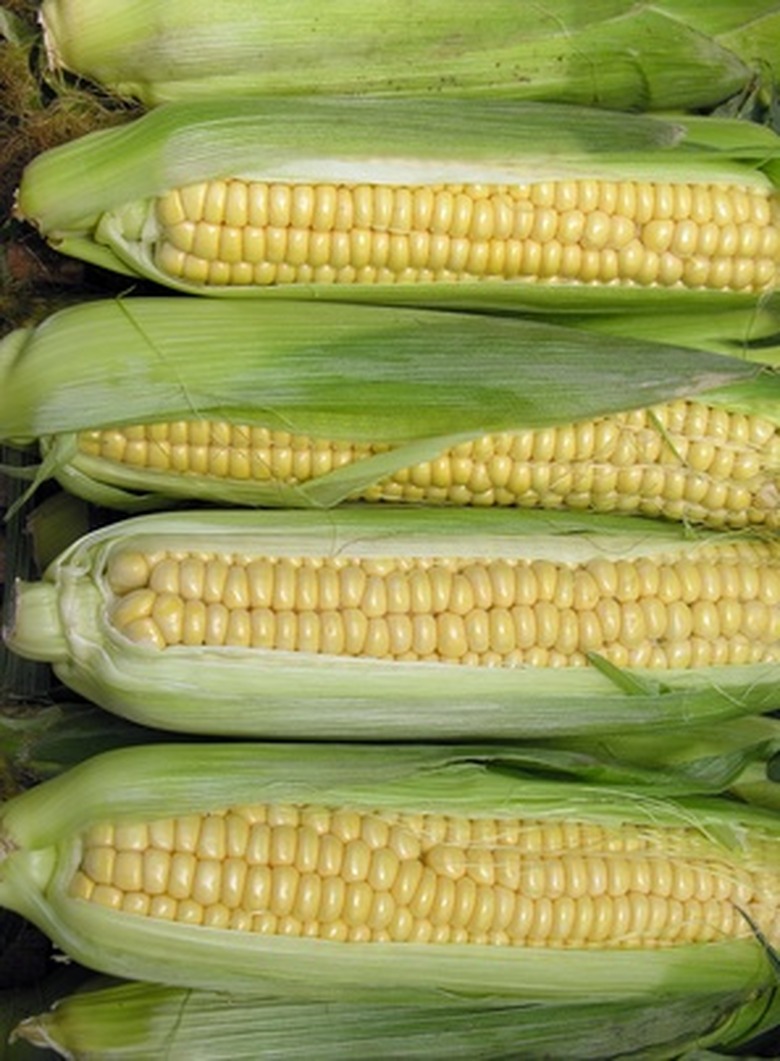How Are GMOs Made?
When the genes of living organisms are altered through genetic engineering, the changed plants or animals are called GMOs or genetically modified organisms. The genetic codes of plants and animals have been influenced by natural selection, cross-breeding and selective breeding since farming started in prehistoric times, but new technologies allow scientists to have much more control over the features a plant or animal should have. Genetic engineering can select desirable characteristics in an organism and add them to the genes of another plant or animal. The practice is controversial because this process can create an organism with characteristics that would not have occurred naturally. The fear is that if such an unnatural organism escapes into the wild and breeds, it may disrupt the natural ecosystem.
TL;DR (Too Long; Didn't Read)
**TL;DR (Too Long; Didn't Read)**
GMOs or genetically modified organisms are created by changing the genetic code of a plant or animal through genetic engineering. Scientists first select desirable animal or plant characteristics. They then look for the genes that control the selected traits. If the selected trait is controlled by one gene or a group of genes on one section of a chromosome, the genes can be isolated and physically cut out from the chromosome. The selected genetic material is then inserted into seeds or newly fertilized eggs and some of the resulting plants or animals will grow with the new genes and the new characteristics. Due to the danger that the new organisms may displace naturally occurring species, many jurisdictions regulate the production of GMOs.
How the GMO Process Works
How the GMO Process Works
GMO creation is a four part process. The first step is the selection of a desirable characteristic or trait in a plant or animal. Scientists then isolate the corresponding genetic code. The part of the chromosome that contains the selected genetic code is then physically cut out and removed. Finally, this genetic material is inserted into seeds or eggs so the new plants or animals will grow with the selected trait.
Selecting a desirable trait is the easy part of the GMO process. Finding the genes that control it is much more difficult. If some plants have the trait and others don't, comparing the genetic codes and looking for differences is one method. Another method compares the genetic code of different species that have the trait and looks for similar sequences. If these two methods don't work, scientists will knock out bits of genetic code that they think control the trait until the trait disappears. Then they know they have found the genes.
One way of isolating the selected genetic material is to use enzymes to cut the DNA chains either side of the target. Scientists can then sort out the short lengths of DNA and will have a sample containing the selected genes. This material is then injected into seeds or newly fertilized eggs. For seeds, gene guns are used to fire metal particles coated with the genetic material into the seeds. Newer techniques also use bacteria injected with the genetic material to infect the seeds or eggs or inject the genes directly into embryo stem cells. The seeds, eggs or embryos are then grown to produce the plants or animals with the new characteristics.
Restrictions Placed on the Production of GMOs
Restrictions Placed on the Production of GMOs
While the creation of GMOs is now within the capabilities of many scientists and labs, most jurisdictions regulate their production and either forbid commercial use or subject it to restrictions and testing. The fear is that, unlike cross-breeding and selective breeding that work with natural gene combinations, GMO creations may result in an organism that would not occur naturally. Such an organism could escape into the wild and negatively affect other species and the balance of ecosystems. Due to such regulations, only a few genetically modified plants are approved for human consumption and the barriers for approval of genetically modified animals for food are very high.
Cite This Article
MLA
Markgraf, Bert. "How Are GMOs Made?" sciencing.com, https://www.sciencing.com/gmos-made-6453138/. 13 August 2018.
APA
Markgraf, Bert. (2018, August 13). How Are GMOs Made?. sciencing.com. Retrieved from https://www.sciencing.com/gmos-made-6453138/
Chicago
Markgraf, Bert. How Are GMOs Made? last modified August 30, 2022. https://www.sciencing.com/gmos-made-6453138/
